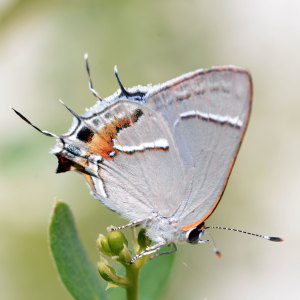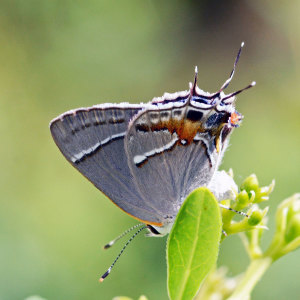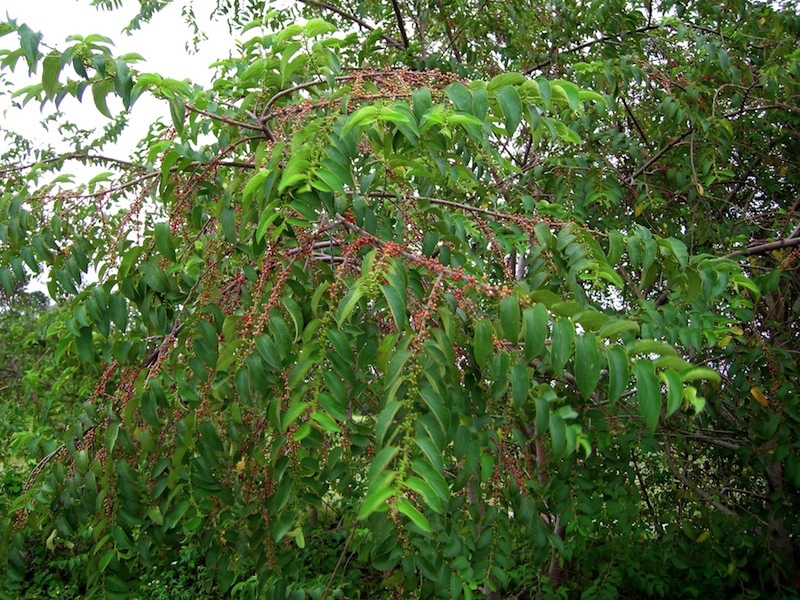With my new “monthly inventory” program underway, I’m taking a bit more time in the mornings and at lunch out in the yard, weeding when windy, taking pictures when calm. And one day this month, I found something quite rare: a butterfly that’s normally seen (when seen at all) in the Keys or in Cuba! Martial Scrub-Hairstreak (Strymon martialis) is an unassuming little guy, like most hairstreaks on the small side. But two curly tails add some visual interest, and the rarity adds even more.
Cech and Tudor, authors of the definitive butterfly guide to the East Coast describe its abundance as follows (writing in 2006):
We are aware of comparatively few mainland sightings of Martial since the early 1990s. And not having seen the species north of the Keys ourselves, we cannot confirm its reported association with Nettletree (Trema micranthema) as a mainland hostplant.
Another field guide, while not commenting in so many words, restricts its reported range in Florida to south (locally uncommon to locally common) and the Keys (again, locally uncommon to locally common), saying “Best bet is to find good stands of the foodplant. The extensive stands of bay cedar at Cactus Hammock have recently [1998] been destroyed by Hurricane Georges. Hopefully, they will recover.”
Here are the two meager shots I was able to capture of this rare visitor to my yard, which is completely lacking in its two known hostplants (Bay Cedar [Suriana maritima] and Florida Trema or Nettletree [Trema micrantha]):


I don’t know whether I’m going to add either of these hostplants in hopes of attracting this rarity to our yard on a more regular basis. Nettle tree is not attractive from an aesthetic point of view, although it is very attractive as a flowering and fruiting tree to all kinds of wildlife; Bay Cedar is prettier, but I don’t have an ideal spot in the yard for it—unless I finally do something about a mistake I made four years ago. (That mistake was planting red-tipped cocoplum right up near the sidewalk. It grows too tall for the low shrub I want in that situation. However, Bay Cedar can grow to head height as well, so it’s not automatic that I’ll want to plug it in.)
Nettle tree is a bit of a weedy species; when a site is thinned by fire or hurricane, it’s among the first to move in and repopulate the area. And that’s a plus for the wildlife, since the insects appreciate the abundant flowers, and the birds and small mammals appreciate the abundant small fruits, but its growth habit is sort of scraggly and leggy at the same time, and it quickly fills in and tries to take over an area. There’s a pretty good write-up of it, with many pictures, on backyardnature.net. Here’s a picture of it from the closest locale to my yard, Pondhawk Natural Area:

For now, I’m content to sit back and let the garden grow, trimming and weeding as necessary; I’m not looking for too much more work. What the future holds in store, we shall see!
References
Glassberg, J., M. C. Minno, and J. C. Calhoun. 2000. Butterflies through binoculars. New York: Oxford University Press.
Cech, R. and G. Tudor. 2005. Butterflies of the East Coast: an observing guide. Princeton, NJ: Princeton University Press.
